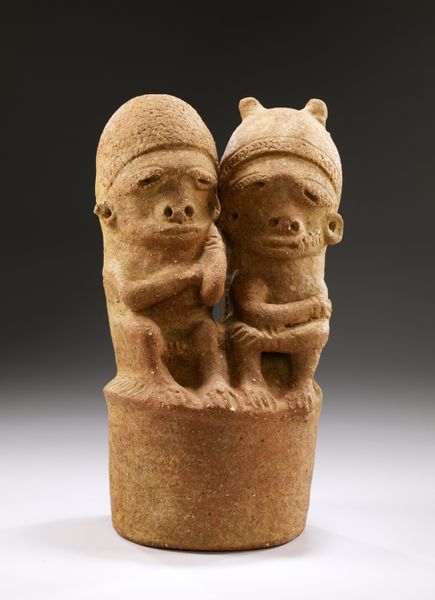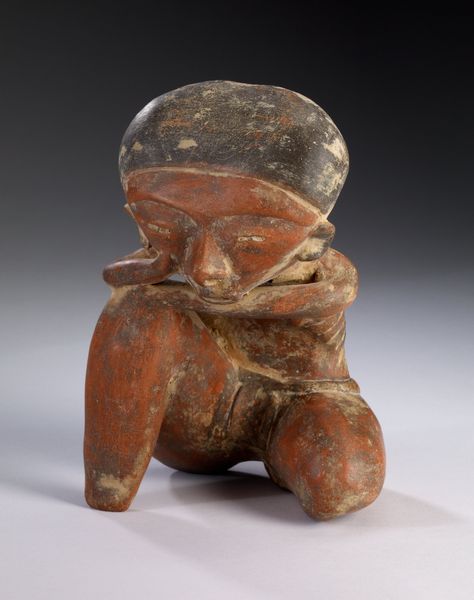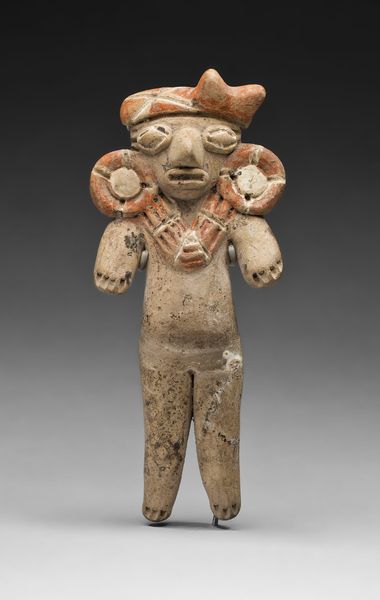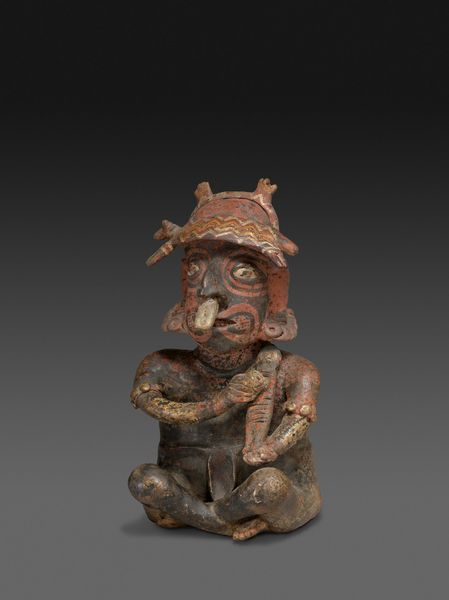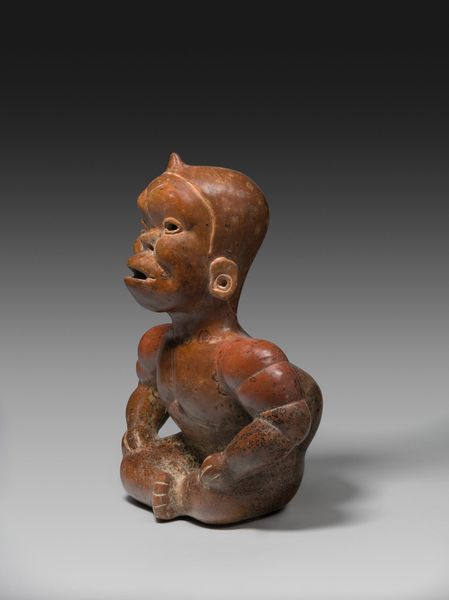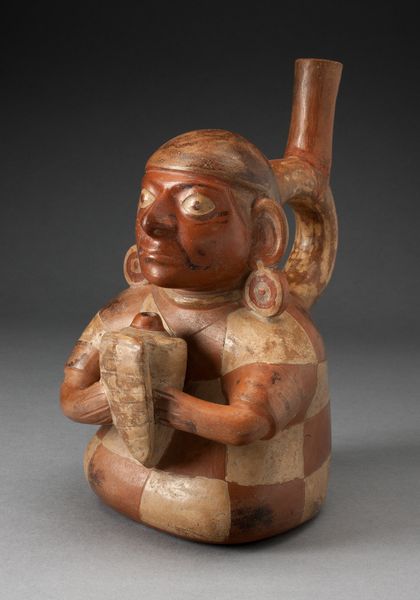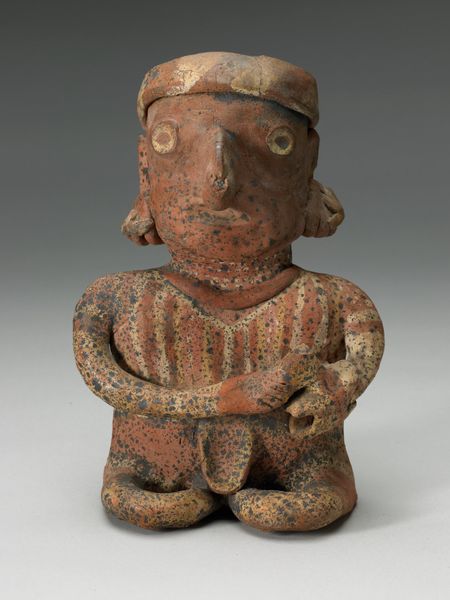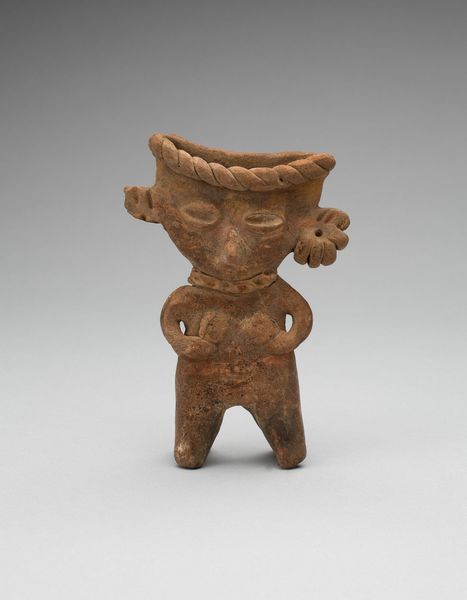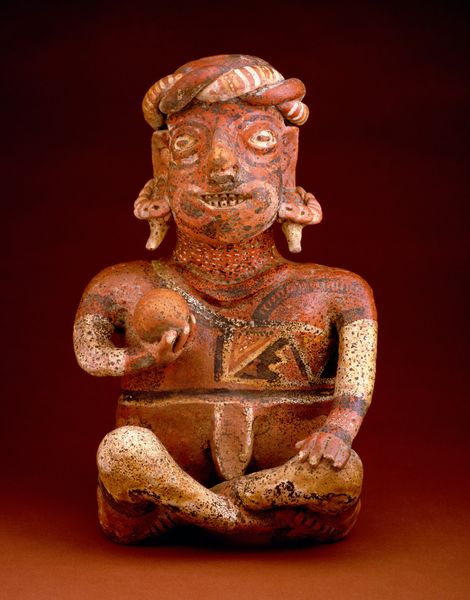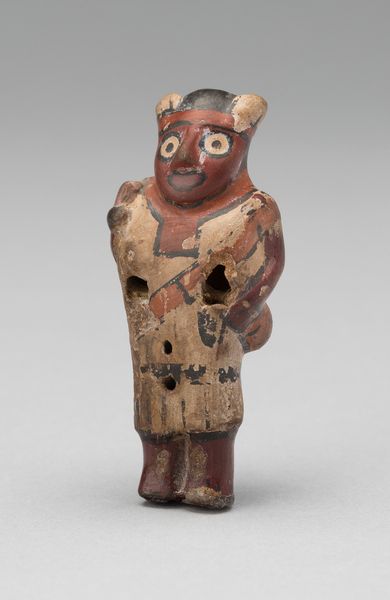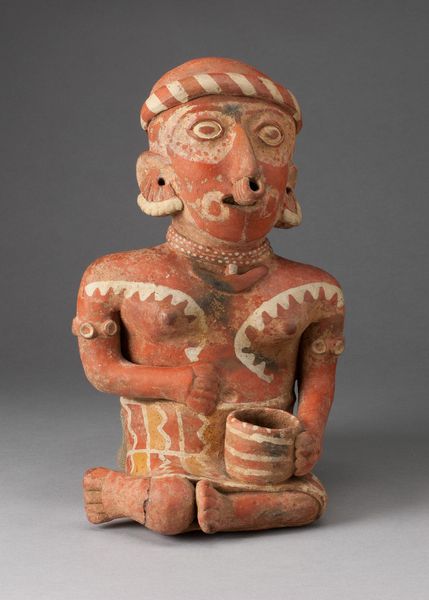
ceramic, sculpture, terracotta
#
sculpture
#
ceramic
#
figuration
#
sculpture
#
terracotta
#
indigenous-americas
Dimensions: H. 34.9 cm (13 3/4 in.)
Copyright: Public Domain
Curator: Well, aren't they charming? This is the "Seated Joined Couple," a ceramic sculpture crafted by the Nayarit people, somewhere around 200 to 300 AD. You can currently find it over at The Art Institute of Chicago. Editor: They're so striking! Immediately I'm drawn to the raw quality of the ceramic, and the almost urgent expression in their faces. What can you tell me about the making process? Curator: The Nayarit were masters of ceramics, you see. This piece, like many from that era and region, was likely created using a coil-and-scrape method and then fired in an open pit. Think about the labor involved, digging and prepping the clay, forming the figures by hand, and carefully painting them. It's all embedded in the piece. Editor: I do! There's an intensity about the rough, tactile surface. You almost sense the fingerprints, the direct contact between artist and clay. And that earthy color palette – reds and ochres. Were these local pigments? Curator: Precisely. They’d have used locally sourced iron oxides to get those warm reds. And beyond the technique, consider the cultural significance: This sculpture isn't just about craftsmanship; it's about community, togetherness, the importance of partnership. Do you notice how they are connected arm to arm? Editor: The join feels protective, tender, even. But also… there’s a formality to it, don't you think? The way they are both adorned, particularly their hats! And the detail around the painting on their bodies, almost looks like some form of writing. Curator: Yes! Those headdresses are intriguing. It almost speaks of rank, ceremony… I like to think this piece shows not only the warmth between a couple, but also acknowledges a very structured existence of the people back then. And there’s always something that reminds us about what connects them through material. Clay sourced from a single place; maybe it's about where they are from more than what they have! Editor: That connection is powerful, to be literally molded from the same stuff. And, I have to say, their quietness, in some ways, does tell such a story. This piece really challenges those art historical separations, reminding us that "fine art" has always been connected to craft, to labor, to the land itself. Curator: Absolutely. I like the mystery behind it; their identities unknown; origin; or even its ultimate purpose; their meaning for those ancient viewers… Editor: Right. Instead of closure, it leaves us pondering those larger material and human connections.
Comments
No comments
Be the first to comment and join the conversation on the ultimate creative platform.
